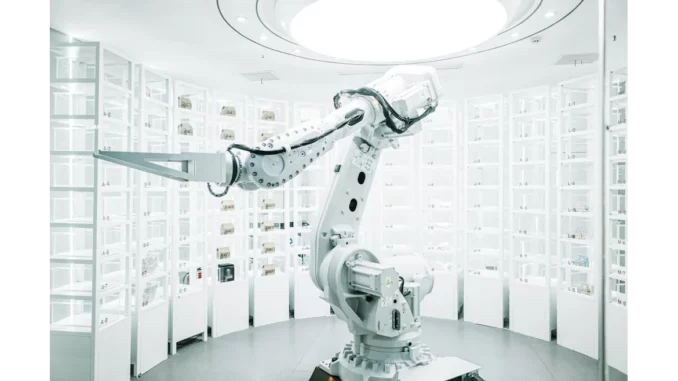
Summary
Demand for computer vision technologies is skyrocketing, and with it, the need for effective machine learning operations (MLOps) to support scalability and reliability. This article delves into critical strategies for implementing MLOps in computer vision projects, highlighting essential components, best practices, and the specialised role of CVOps. “MLOps provides the backbone for deploying robust machine learning models efficiently,” asserts Dr. Rachel Green, a leading AI specialist at VisionTech. As the industry evolves, understanding these frameworks is paramount for staying competitive.
Main Article
As computer vision applications proliferate across sectors, the role of machine learning operations (MLOps) in ensuring their successful deployment and maintenance becomes indispensable. MLOps, a framework aimed at automating and optimising the lifecycle management of machine learning (ML) models, is pivotal for achieving scalability and reliability in production environments.
Key Components of MLOps for Computer Vision
Establishing a robust MLOps framework involves integrating several core components:
-
Version Control Systems
Version control systems are fundamental to maintaining the reproducibility and collaborative potential of computer vision projects. Tools such as Git and Data Version Control (DVC) are instrumental in tracking code, data, and model changes, ensuring seamless management of diverse dataset and model versions. -
Automated Testing and Validation
Implementing rigorous automated testing and validation processes is essential for guaranteeing the accuracy and dependability of computer vision models. By detecting potential issues early, these frameworks minimise risks associated with production errors. -
Continuous Integration and Deployment Pipelines (CI/CD)
CI/CD pipelines automate the integration of new features, the testing of changes, and the deployment of updates into production. This methodology accelerates development cycles, ensuring computer vision systems remain cutting-edge. -
Monitoring and Alerting Mechanisms
Continuous monitoring of model performance is critical for sustaining the health and reliability of computer vision systems. Tools such as Prometheus and Grafana offer real-time insights into model metrics, facilitating prompt issue detection and resolution. -
Collaboration Tools
Effective collaboration between data scientists, ML engineers, and operations teams is crucial. Platforms like Slack and Jira support communication and coordination, fostering a collaborative environment essential for project success.
Best Practices for Effective MLOps Implementation
To master MLOps in computer vision projects, organisations should adhere to these best practices:
-
Establish Clear Processes
Clearly defining and documenting processes for each MLOps cycle stage—from data collection to model deployment—ensures consistency and clarifies team roles and responsibilities. -
Prioritise Data Quality
The accuracy of computer vision models is heavily reliant on high-quality data. Techniques such as data cleaning, labelling, and augmentation are vital for ensuring datasets are both accurate and representative. -
Leverage Containerisation
Containerisation technologies like Docker allow for consistent model packaging and deployment across varying environments, enhancing scalability and simplifying processes. -
Foster a Culture of Collaboration
Encouraging cross-functional collaboration and knowledge sharing is essential for driving innovation. Regular meetings, workshops, and joint projects can significantly bolster a collaborative culture.
The Role of CVOps in Accelerating Development
Computer Vision Operations (CVOps) is a specialised subset of MLOps that addresses the unique challenges of computer vision projects. By embracing CVOps practices, organisations can streamline the development and deployment of these systems, reducing time-to-market and enhancing solution reliability. “Incorporating CVOps can revolutionise how we approach computer vision challenges,” notes Emily Harper, CTO of InnovateAI.
Detailed Analysis
The integration of MLOps in computer vision not only addresses immediate operational needs but also aligns with broader industry trends towards automation and AI-driven processes. As businesses increasingly rely on data-driven decision-making, the demand for efficient and scalable AI solutions continues to grow. The adoption of MLOps frameworks supports this trend by enabling organisations to deploy complex models swiftly and maintain them with minimal operational overhead.
Moreover, the focus on collaboration and containerisation reflects a shift towards more agile and flexible development environments. This adaptability is crucial in an ever-evolving technological landscape where the ability to respond rapidly to new challenges and opportunities can determine market leadership. The emphasis on data quality underscores the realisation that robust models are built on reliable data, a principle that holds true across AI disciplines.
Further Development
Looking to the future, the evolution of MLOps frameworks will likely incorporate more advanced AI-driven optimisation tools, enhancing their ability to manage increasingly complex computer vision models. As these systems become more sophisticated, the role of CVOps will expand, further refining the specialised processes required for computer vision projects.
Continued research and development in this field will undoubtedly lead to more innovative solutions, driving further advancements in automation and AI. Readers are encouraged to stay informed on these developments as the landscape of computer vision and machine learning operations continues to evolve.

